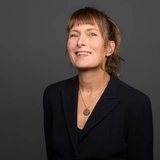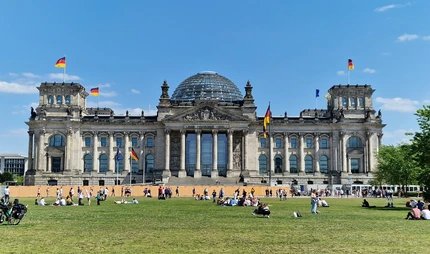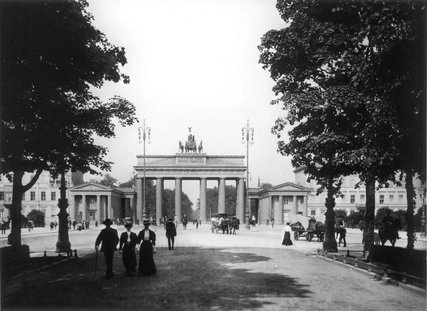
People walk along Unter den Linden, a train arrives at Alexanderplatz, a kangaroo boxes, a man juggles: The mere fact that these scenes come to life before their eyes thrills Berliners. For four weeks in 1895, thousands flocked to the Varieté Wintergarten to see the moving images of the Skladanowsky brothers. Their so-called "Bioscope" is a revolution, a world premiere: the Berlin brothers invent the film - eight weeks before their French competitors Lumière present their Cinématographe.
To this day, historians disagree about who should be considered the inventor of cinema. Basically, it probably lies in the air of technical progress that electrifies the metropolises at the beginning of the 19th century. Even today in Berlin, the industrial heritage of the electropolis of the time, driven by ideas and inventiveness, as well as the business acumen of Berlin entrepreneurs such as Emil Rathenau, are still impressive.
First film screening in Berlin
The fact is that the brothers Max and Emil Skladanowsky projected short film sequences in front of a large audience as early as November 1, 1895; the Lumière brothers did not invite the public to a film screening until December 28 of the same year at the Grand Café on the Boulevard des Capucines in Paris.
The Berlin audience can therefore be proud to be one of the first to marvel at moving images. In front of the Bioscope, Max Skladanowsky, trained as a photographer and glass painter, experiments with painted glass plates. Through clever cross-fading, he already succeeds in creating the illusion of a moving image. However, he was not entirely satisfied with the quality of these "fog pictures" and, as early as 1894, built the first film camera with the crankcase, which was already recording eight pictures per second. Max Skladanowsky also built the matching projector, the bioscope, himself.
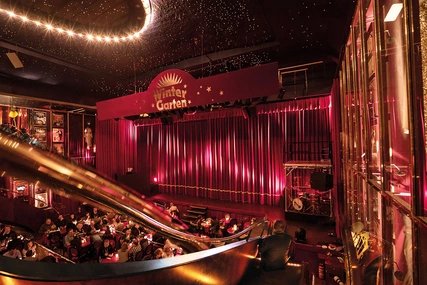
The first top-secret test projections were probably flickered in front of a selected audience in July 1895 in the Feldschlösschen restaurant in Pankow. The contract with the Varieté Wintergarten follows two months later, followed by performances in Hamburg, Halle, Köthen, Magdeburg, Oslo, Amsterdam, Groningen, Copenhagen and Stockholm. A planned guest performance in Paris is prevented by the brothers Auguste and Louis Lumière.
The show must go on!
But this does not discourage the Skladanowskys at all, they continue to develop their devices and shoot impressive street scenes at Alexanderplatz and Unter den Linden in Berlin. The brothers even shoot two film burlesques in the years 1913 and 1914. Brother Eugen, a trained clown, plays the leading role in both "Die Fliegenjagd oder die Rache der Frau Schulze" and "Die Moderne Jungfrau von Orléans". But by then, more modern film techniques and more gifted directors and first real film stars have long prevailed.
The last screening with the bioscope is dated by historians to 1897 in Szczecin. After that Max Skladanowsky concentrates on the distribution of flip books, i.e. flip books. Emil continues to travel the country with his water show theater. The show must go on!
Here Berlin remembers the brothers Skladanowsky
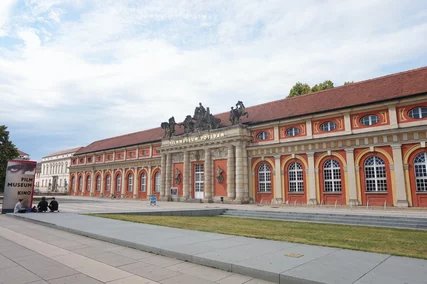
- You can find the original bioscope and a replica of the camera in the Filmmuseum Potsdam.
- The gravesite of the Skladanowsky brothers is located at the Pankow Cemetery IV in Buchholzer Straße in Niederschönhausen, to the left of the main entrance.
- At the longtime residence of the Skladanowskys in Waldowstraße 28 in Niederschönhausen you will find a plaque of honor and not far from it the Skladanowskystraße (until 1951 Wrangelstraße).
- A star on the Boulevard of Stars in Berlin was dedicated to the Skladanowskys in September.
- In 1995, Wim Wenders filmed a tribute to "The Skladanowsky Brothers" together with students from the Munich University of Television and Film.
ABOUT BERLIN App
Find more powerful stories from Berlin on our app ABOUT BERLIN App. You can download it for free for iPhone and Android.


Es gibt viel zu erzählen. ABOUT BERLIN.
